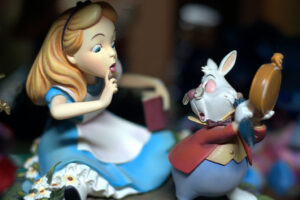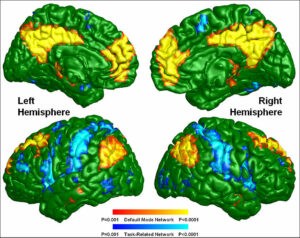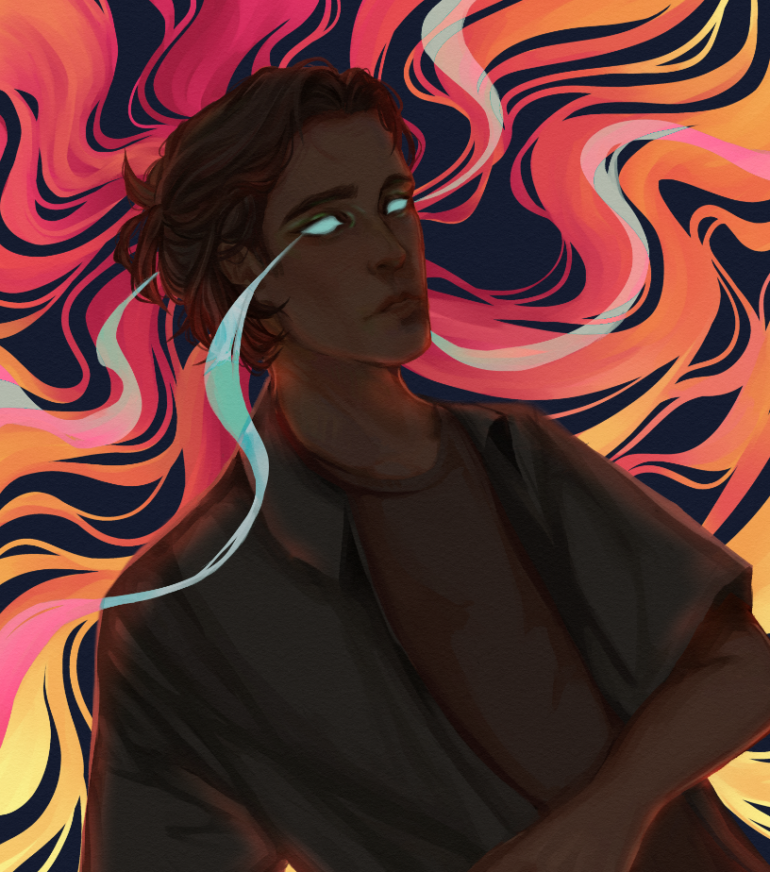Yahoo! Mario hits his head on a yellow mystery block. When I do that, I get a concussion, but when he does it he is rewarded with a red and white mushroom–a magic mushroom. When Mario eats it, he turns into Super Mario, where he can sustain extra damage and smash through bricks.

Does this sound similar to any other stories pertaining to wonderland magic? Lewis Carroll’s Alice in Wonderland is a trip in and of itself, with its fairytale setting and bold characters. Alice herself lands into a doozy when she nibbles on certain magic mushrooms, where she feels herself shrink and grows in size.
Pop culture is no stranger to portraying the effects of psychedelics; a distorted, colorful daze that drastically disorients the consumer. But how can something we ingest elucidate such abstract visions and feelings?
Psilocybin is the chemical compound that is responsible for hallucinations encountered when eating “magic” mushrooms. The body changes the structure of psilocybin and turns it into a new chemical called psilocin. Psilocin is an active metabolite, meaning that when it is metabolized, it produces effects in the body that induce magic mushroom experiences such as euphoria, perceptual changes, and physical responses. The drug is not all pleasant; overdosing and negative effects, colloquially referred to as a “bad trip,” could include panic, paranoia, vomiting, and even comas.
How can we explain this surreal state of mind? Our brain must be working overtime in producing the experiences and hallucinations we see, right? To understand the brain activity of people under psilocybin, a study done at the University of Oxford led by Dr. Robin Carhart-Harris used fMRI techniques to map cerebral blood flow and changes in oxygen levels in veins after infusions of psilocybin and placebo. They found that psilocybin greatly reduced brain blood flow and oxygen levels in the veins of the brain. It also reduced neural firing in the medial prefrontal cortex (mPFC) and the posterior cingulate cortex (PCC). These parts of our brain are very important communication hubs for efficient information transfer between different regions, so the deactivation of these parts explains why people feel less conscious under psilocybin and why everything feels more surreal. Think of it like a less intense form of dreaming.

But despite the decreased blood flow, the metabolism in the PCC was 20% higher than most other brain regions, as well as metabolic activity in the default-mode network (DMN), a region that is subconsciously activated when we reflect internally, like when we process information about ourselves or when we imagine the future. These increased metabolic activities imply that despite having a decrease in consciousness, our brain still compensates. This artificially-induced relaxation makes the brain almost uncomfortable with the idea of “letting loose,” and it’s true—these findings are related to philosophical musings that the abstract mind and physical brain actively work to constrain its experience of the world. This is an idea shared by author and philosopher Aldous Huxley and neuroscientist Karl Friston. Huxley believed that the brain acts as a valve that “constrains conscious awareness,” with psychedelics acting as an inhibitor of this filtering. Similarly, Friston’s free-energy principle proposes that our mind and brain work to constrain experiencing the full weight of the world, the DMN being a crucial component for this constraint. Our brain is like its own dystopia, rebelling against the greater weight of “truth”—pretty neat!
This all seems so philosophical, but it gets way more meta than that. Research has been done to actually quantify states that our brains occupy when under psilocybin. Brain states are recurring patterns of mental activity, such as wakefulness, emotion, and problem-solving, and are relevant for cognition and consciousness. By using functional MRIs, Dr. S. Parker Singleton and their colleagues at Cornell University proved that the energy required to transition between brain states would decrease with the use of LSD and psilocybin. But how does this mechanistically work?
Well, it’s actually quite simple. Psilocin has a very high affinity towards a particular cell receptor in human cortexes of the central nervous system known as serotonin 2A, or 5-HT2a. When it binds to these receptors, it elicits a sense of euphoria. Dr. Singleton found that a greater density of these receptors led to reduced transition energies, allowing for easier brain state transitions and diverse activity. So, it’s implied that psilocybin decreases the energy needed to transition between brain states. I like to think that it’s like how a catalyst is used in chemistry to speed up reactions because it lowers the energy needed to carry the reaction. This decrease in energy could lead to some breakthroughs in therapeutic and pharmacological use. This is some pretty heavy stuff: using our brain to think about our brain!
Although magic mushrooms have a strong recreational reputation, a lot of research has been done to show their potential in medicine. One particular study done by Dr. Nakul Ravi Raval found that psilocybin increases the synaptic density in a pig brain, even after a week. Low synaptic densities in the brain have been associated with mood disorders such as major depressive disorder, so an increase in density seems to suggest that psychedelics have potential antidepressive effects if properly administered. Psilocybin hasn’t just been studied in pigs—Dr. Roland R. Griffiths and his colleagues found that higher doses of psilocybin decreased clinician-rated and self-rated symptoms of depressed mood and anxiety among patients with life-threatening cancer diagnoses. These studies could help improve the steps taken by healthcare to ensure the quality of life for a patient, but this doesn’t give you the green light to try this at home!
Psilocybin’s potential is also not just in mood changes. Dr. Robin Carhart-Harris led another study at Cambridge University looking into how psilocybin can be used in psychotherapy, and the results were pretty wild. He hypothesized that psilocybin helps a patient access their memories and emotions, and tested this by using fMRI scans to compare neural responses. People reported that the drug actually enhanced their recollection of memories; they were rated as more vivid, visual, emotional, and positive compared to the placebo. Along with memory regions, psilocybin also activated some visual and sensory regions, which could explain how memories feel more vivid or “real” under psychedelics. Psilocybin could be useful in psychotherapy as a tool to recall important memories or to reverse negative biases and trauma.
It’s pretty ironic that such intensive scientific research on a psychedelic compound could produce even more abstract conclusions, hypotheses, and questions. However, the intensive research being poured into understanding how psilocybin can affect us so greatly has turned into cool opportunities to learn how we can benefit from its effects. Trippy toadstools could be the key to opening a third eye in medicine.
